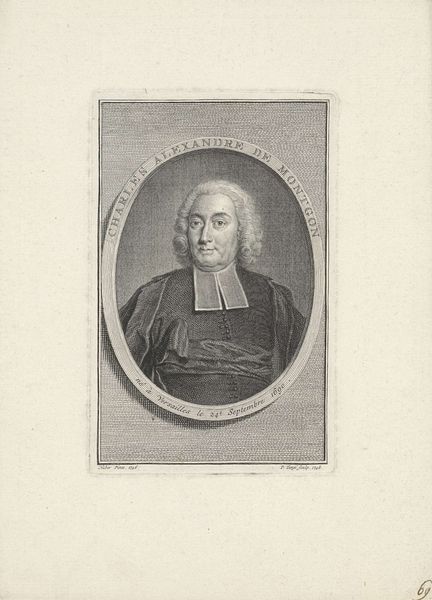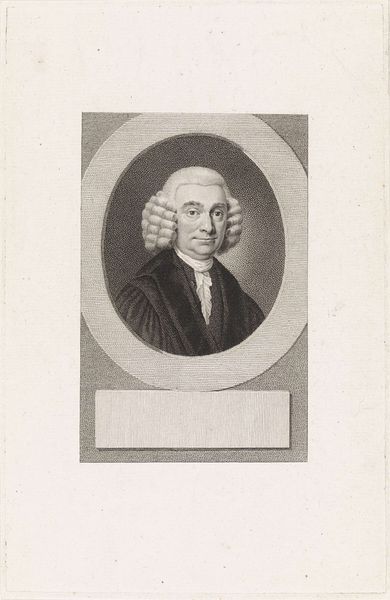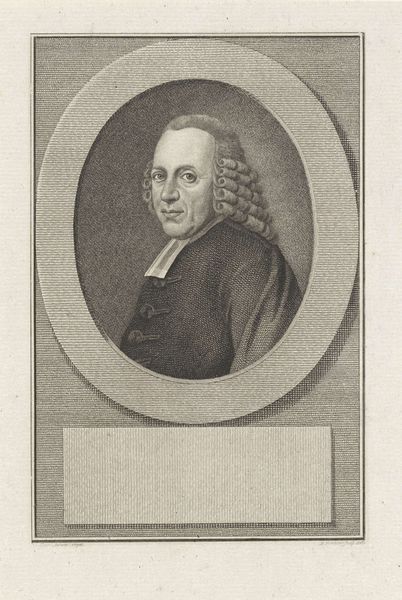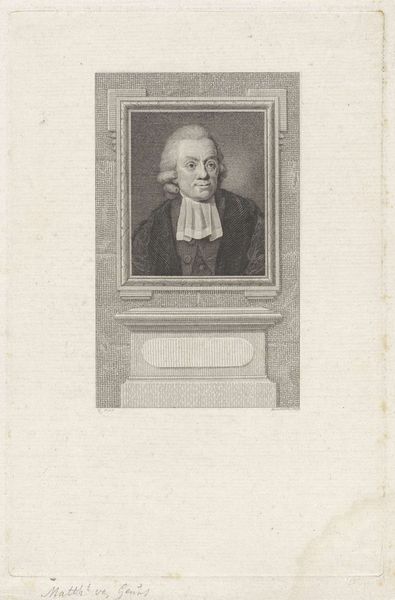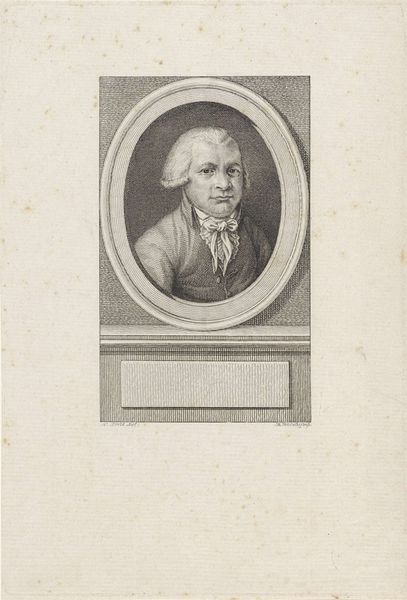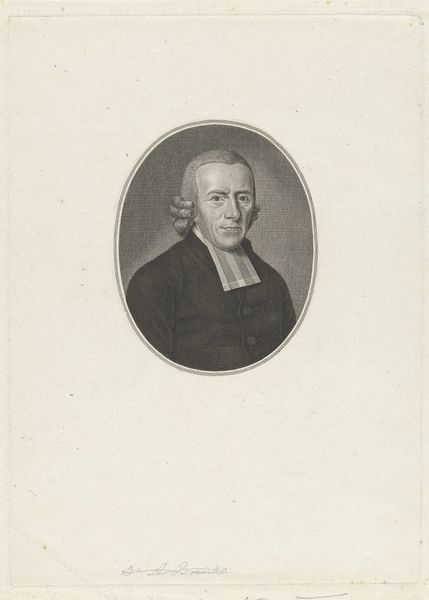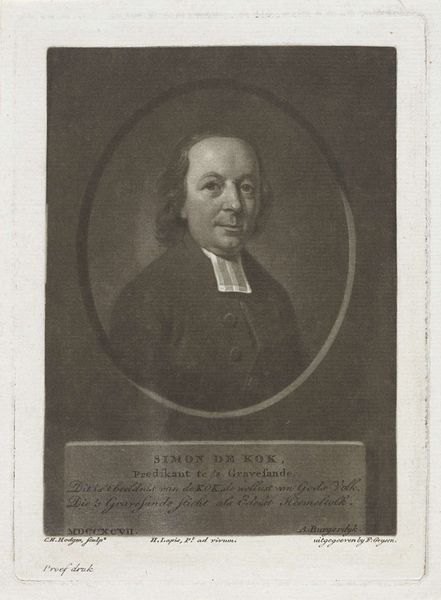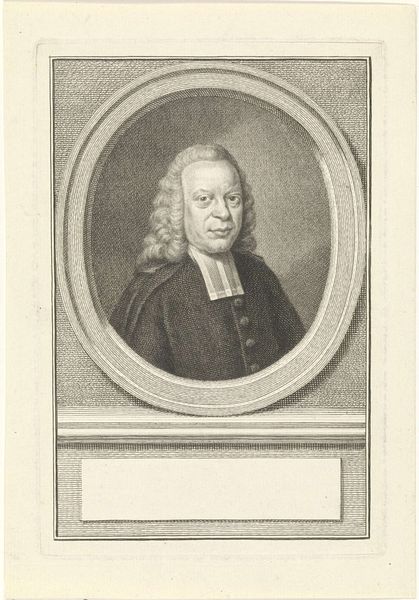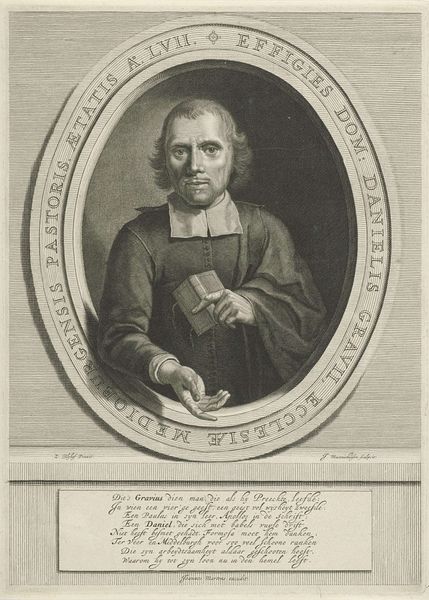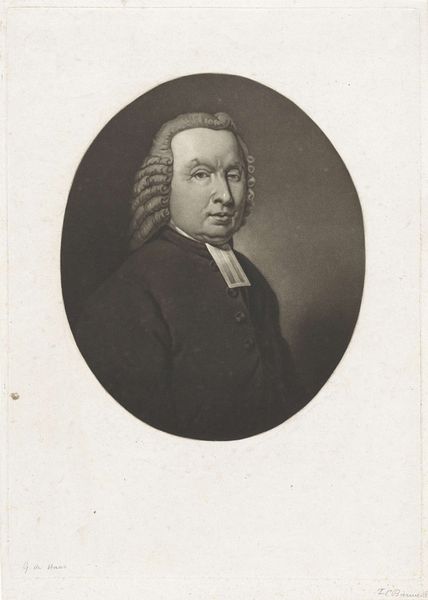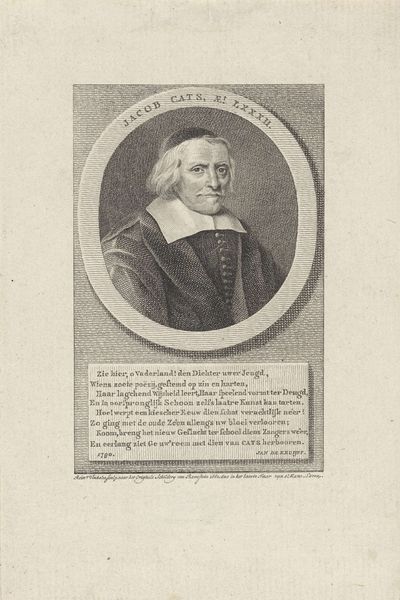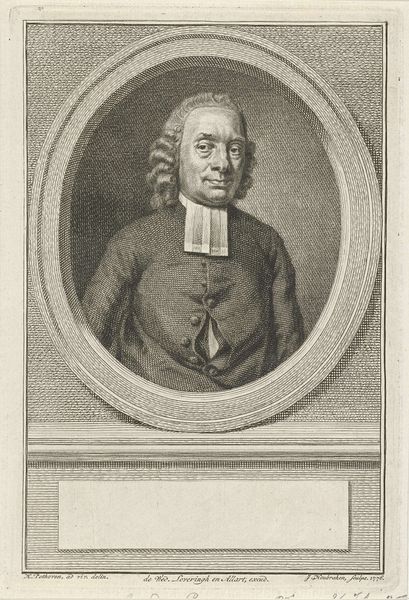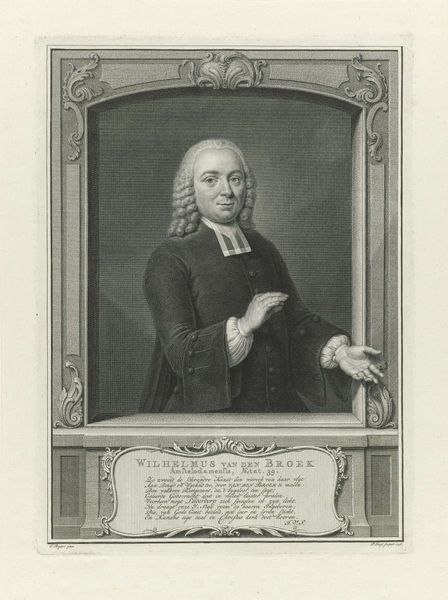
engraving
#
portrait
#
neoclacissism
#
old engraving style
#
engraving
#
realism
Dimensions: height 154 mm, width 122 mm
Copyright: Rijks Museum: Open Domain
Curator: Looking at this engraving, “Portret van Cornelis Fortuyn,” it strikes me as remarkably serene. A simple man, caught in a moment of quiet reflection. What’s your immediate take? Editor: I’d say “serene” might be one interpretation, but to me, there’s an undeniable tension lurking beneath the surface. Think about the context: late 18th, early 19th century. An era of revolutions. This image, created sometime between 1789 and 1822, might depict a figure navigating societal upheavals. Curator: Absolutely. Made by Jan Willem Caspari, it definitely captures the formality of the period, that Neoclassical bent, wouldn't you say? I wonder, do you know anything about Cornelis Fortuyn? His face tells me nothing about his story. Editor: Biography reveals the hidden currents. But let’s stay with the image a moment longer. The starkness, that circular frame—it all speaks to a very specific mode of representation intended to communicate status, but more than that it seems it’s communicating conformity. I want to break him out of that circle! Curator: I’m getting that, that’s it's neat framing gives it an aura of stability, but also almost a sort of confinement too, like an idea captured in a bottle! Considering it’s an engraving, that realism, despite the small scale, is impressive. Editor: Engraving was often employed to reproduce portraits for wider circulation, solidifying identities and projecting power dynamics. To consider realism itself can act to perpetuate the social status quo by presenting an seemingly objective vision of this world... But now I wonder, how was his image consumed? Did it hold the same meaning across different strata of Dutch society? Curator: That’s the rabbit hole I want to jump down! For now, let’s appreciate how Caspari managed to distill so much into such a precise medium. From that meticulous linework, each detail tells a story. Whether a story of resilience, as you’ve presented or quiet contemplation, for me at least the more obvious take. It certainly opens a space for reflection on the many different ways a face in history can speak to us. Editor: Agreed! There is an undeniable dialogue across time, that reminds us that images are never neutral, and as scholars we're tasked with unearthing all of their rich hidden narratives.
Comments
No comments
Be the first to comment and join the conversation on the ultimate creative platform.
